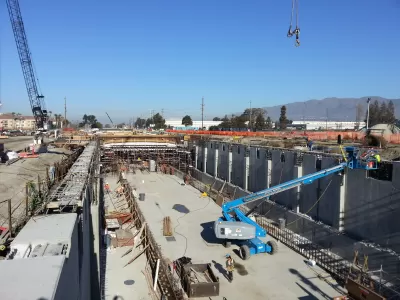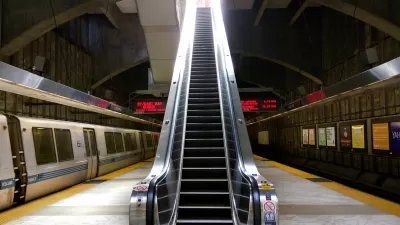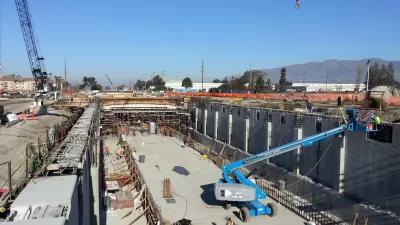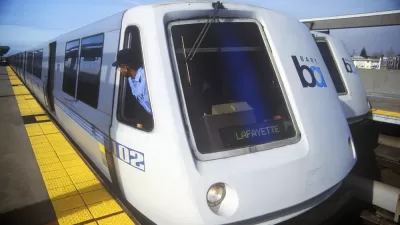BART and VTA officials must come to an agreement about whether to use a single- or double-bore tunnel for transit extension in San Jose, and time is running out.

The four-station San Jose BART extension will be one of the largest extensions the system has ever received, but what those stations will look like is still up for debate. "Not only will it link the economic powerhouse of Silicon Valley to the East Bay and San Francisco, it will also connect BART to Caltrain and high-speed rail, transforming San Jose into a regional transit hub unlike any the Bay Area has ever seen," Erin Baldassari and Emily Deruy write for The Mercury News.
The decision comes down to the difference between a twin-bore or single-bore solution for tunneling. The more common twin bore would cut two tubes for trains to run on parallel tracks, with a platform in the middle. The single-bore alignment would cut one large tunnel and put the two tracks above one another. "To get funding and start construction in the next two years, the VTA’s governing board needs to make its decision by April 5, and BART must approve that recommendation by April 26," Baldassari and Deruy write.
The two approaches have different features, the single-bore solution, which the Valley Transportation Authority (VTA) favors, would be a deeper cut and disrupt the street and utilities less during the construction period. A double-bore tunnel would have a larger platform and, because it wouldn't be different from other tunnels in the system, it would be less likely to cause confusion in the event of an emergency evacuation, BART officials contend.
FULL STORY: Time is ticking on $1.5 billion BART decision paving way to San Jose

Alabama: Trump Terminates Settlements for Black Communities Harmed By Raw Sewage
Trump deemed the landmark civil rights agreement “illegal DEI and environmental justice policy.”

Study: Maui’s Plan to Convert Vacation Rentals to Long-Term Housing Could Cause Nearly $1 Billion Economic Loss
The plan would reduce visitor accommodation by 25% resulting in 1,900 jobs lost.

Why Should We Subsidize Public Transportation?
Many public transit agencies face financial stress due to rising costs, declining fare revenue, and declining subsidies. Transit advocates must provide a strong business case for increasing public transit funding.

Paris Bike Boom Leads to Steep Drop in Air Pollution
The French city’s air quality has improved dramatically in the past 20 years, coinciding with a growth in cycling.

Why Housing Costs More to Build in California Than in Texas
Hard costs like labor and materials combined with ‘soft’ costs such as permitting make building in the San Francisco Bay Area almost three times as costly as in Texas cities.

San Diego County Sees a Rise in Urban Coyotes
San Diego County experiences a rise in urban coyotes, as sightings become prevalent throughout its urban neighbourhoods and surrounding areas.
Urban Design for Planners 1: Software Tools
This six-course series explores essential urban design concepts using open source software and equips planners with the tools they need to participate fully in the urban design process.
Planning for Universal Design
Learn the tools for implementing Universal Design in planning regulations.
Smith Gee Studio
Alamo Area Metropolitan Planning Organization
City of Santa Clarita
Institute for Housing and Urban Development Studies (IHS)
City of Grandview
Harvard GSD Executive Education
Toledo-Lucas County Plan Commissions
Salt Lake City
NYU Wagner Graduate School of Public Service





























